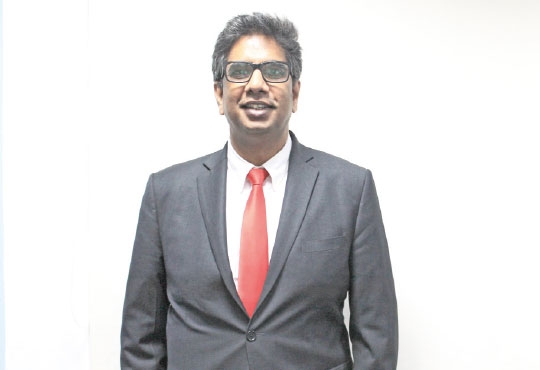
A Case Study of Failure Modes of Robotic Process Automation
Nishant Goel, Vice President – Automation Head, Mphasis | Monday, 09 October 2017, 09:01 IST
 Looking at cost pressure, dynamic business requirements and huge IT legacy, “Robotic Process Automation” has slowly emerged as one of the key levers to expedite Business transformation journey for many organizations. Every other Business function, BPO service Provider & the complete IT industry is busy sharing numerous success stories around RPA implementation. Also at the same time, RPA product organizations are busy oversimplifying the technology. Over-all, the RPA industry is continuously evolving on a daily basis and creating a positive mark on many large business organizations.
Looking at cost pressure, dynamic business requirements and huge IT legacy, “Robotic Process Automation” has slowly emerged as one of the key levers to expedite Business transformation journey for many organizations. Every other Business function, BPO service Provider & the complete IT industry is busy sharing numerous success stories around RPA implementation. Also at the same time, RPA product organizations are busy oversimplifying the technology. Over-all, the RPA industry is continuously evolving on a daily basis and creating a positive mark on many large business organizations.
Just like every coin has two faces, RPA also has significantly high failure rate. It is thus important to critically evaluate the “success” element of RPA case studies and carefully understand various failure modes.
Lack of alignment with all concerned stakeholders
Typically RPA Initiatives are driven by the Business side of the Organization with very late involvement of IT Organization. In an enthusiasm to accomplish early benefits of RPA and considering simplified approach from various RPA products, Business organizations are often tending towards overconfidence. And thus end up with half-baked transformation strategy.
Consider one example- One of the large global courier services company while awarding the service contract agreed for an approach where offshore transition was planned along with transformation. While this helped in reducing the over-all cost, it resulted in mad rush from the Service provider towards RPA implementation. Limited knowledge on processes, IT and infrastructure landscape played its trick and finally huge re-work on RPA implementation. Another example is where one large global Bank while defining their RPA strategy for ~3000 FTEs transformation, were constrained by their existing security policies and not able to provide credentials for third party RPA developers and also the access for test environment. Work-arounds were identified and the complete delivery methodology proved out to be so inefficient that the whole initiative got delayed significantly with huge exception rates.
Lack of thorough due diligence on process selection and business case creation
In order to expedite transformation journey, agreeing on the outcome on the basis of superficial process assessment and then force fitting the RPA solution to meet the numbers often results in long term failures. Selective Automation is the key. Many a times, the rule of 80-20 is applied to reap maximum benefits. Low volume exceptions are typically kept out of scope for the Robots. There exists few cases in the Industry where RPA is implemented with huge effort to automate processes worth 20-40 person hours of effort per month. This aspect is critical to success and thus should be dealt carefully with thorough due diligence.
Each RPA problem can be solved using multiple solution patterns. Striking a right balance between business process re-engineering and technology is the key. Too much technology often impacts the return on investment and also poses huge risk of failure. Cognitive is the biggest buzz world today in the Industry. It’s good to include cognitive aspects as part of the over-all solution but only when it is individually providing the desired corresponding benefits.
Lack of clearly defined test strategies
Here are few common discussion points during user acceptance testing. It was working absolutely fine in development environment but not stable in production environment… Not all test scenarios were tested due to lack of test data… BOT is not robust as it fails for every other exception.This debate goes on and takes away the positive energy of the collaborated workforce. This finally results in significant delay and sometimes even project itself gets scrapped. Thorough tracking of functional defects and exceptions having tight coupling with desired outcome is the key… It is important to define the test phases considering test data availability, differences between test and production environment of underlying source applications, functional testing, exception testing and the real data testing.
Lack of focus on change management, reporting & proactive monitoring
Once BOTs get deployed, it is required to holistically define an approach to execute and operate them in more secured and efficient manner. It is then important to upfront define the clear strategy around it. Often it is observed that the rush to accomplish quick benefits results in a huge mushroom farm of Robots, managed manually through localized teams. Thus, it is highly recommended to focus on areas like change management, Credential management, Robot monitoring & Control, and high availability & scalability of over-all RPA Infrastructure.
Changes can come due to changes in Infrastructure, Applications or even the processes. The key here is to have robust change management process established with all the three different groups in such a way where Changes are recognized much earlier in lifecycle and BOTs get adequate time to get fixed accordingly. Also, proactive monitoring and continuous improvement is not optional in case of RPA implementation. It is required to continuously adjust BOTs with optimal frequency to deal with changes in Volume patterns and sustain the same productivity levels as envisaged before.
Strategized need of RPA
It is important to study historical business process change patterns to define the right level of generic design. As a rule of thumb, all threshold limits and business logic components are potential candidates.
In summary, Robotic Process Automation technology has successfully emerged as one of the strong business transformation levers if strategized, implemented and deployed in structured scientific manner and not as a technology of Work around.
CIO Viewpoint
Hyper-Converged Infrastructure: The Next Big...
By Amit Jaokar, EVP - IT, Choice International
Embracing Technology: Need of the Hour in BFSI
By Nikhil Bandi, SVP & CIO, Vistaar Financial Services
Three Pronged Approach For Digitization In Life...
By Ekhlaque Bari, EVP & Head Technology - Max Life Insurance
CXO Insights
A Glimpse of A Changed AI Perspective in India
By Dr. Vijay Srinivas Agneeswaran, Senior Director of Technology, Sapient
Social Networking and the Enterprise
By Arindam Sen, SVP, Schneider Electric
Digital Transformation - Darwinism Or Dwarfism?









